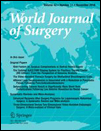Prognostic Significance of Acute Kidney Injury Following Emergency Laparotomy: A Prospective Observational Cohort Study
Abstract
Aims
Post-operative acute kidney injury (AKI) is a common and independent mortality risk factor carrying high clinical and economic cost. This study aimed to establish the incidence of AKI in patients undergoing emergency laparotomy (EL), to determine patients’ risk profile and consequent mortality.
Methods
Consecutive 239 patients of median age 68 (IQR 51–76) years, undergoing EL in a UK tertiary hospital, were studied. Primary outcome measure was AKI and in-hospital operative mortality.
Results
Ninety-five patients (39.7%) developed AKI, which was associated with in-hospital mortality in 32 patients (33.7%) compared with 7 patients (4.9%) without AKI. AKI occurred in 81.1% of all mortalities, but none occurred when AKI resolved within 48 h of EL. AKI was associated with chronic kidney disease, age, serum lactate, white cell count, pre-EL systolic blood pressure and tachycardia (p < 0.010). Median length of hospital stay in AKI survivors was 15 days compared with 11 days in the absence of AKI (p < 0.001). On multivariable analysis, only AKI at 48 h post-EL was significantly and independently associated with mortality [HR 10.895, 95% CI 3.152–37.659, p < 0.001].
Conclusion
Peri-operative AKI after EL was common and associated with a more than sixfold significant greater mortality. Pre-operative risk profile assessment and prompt protocol-driven intervention should minimise AKI and reduce EL mortality.




